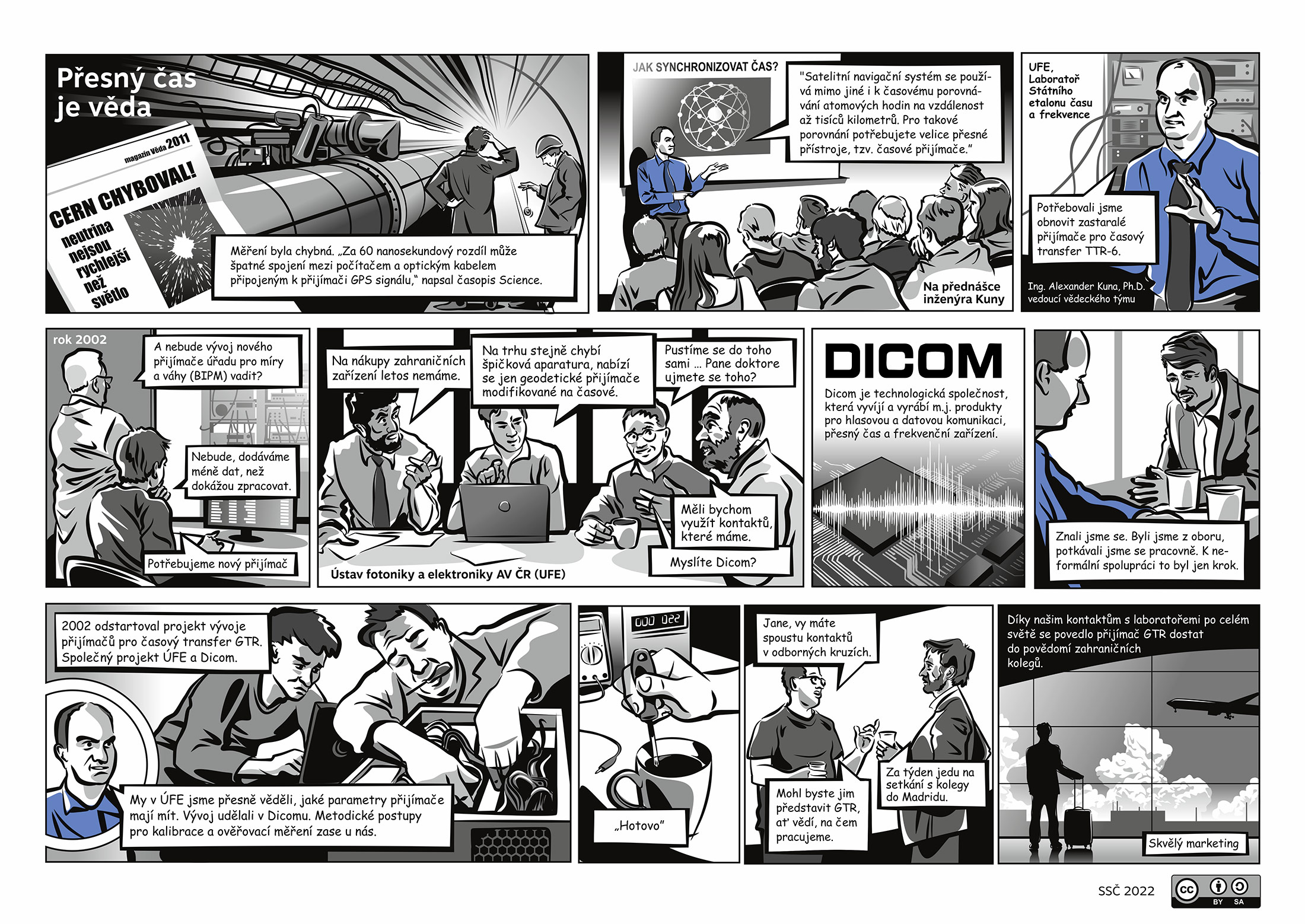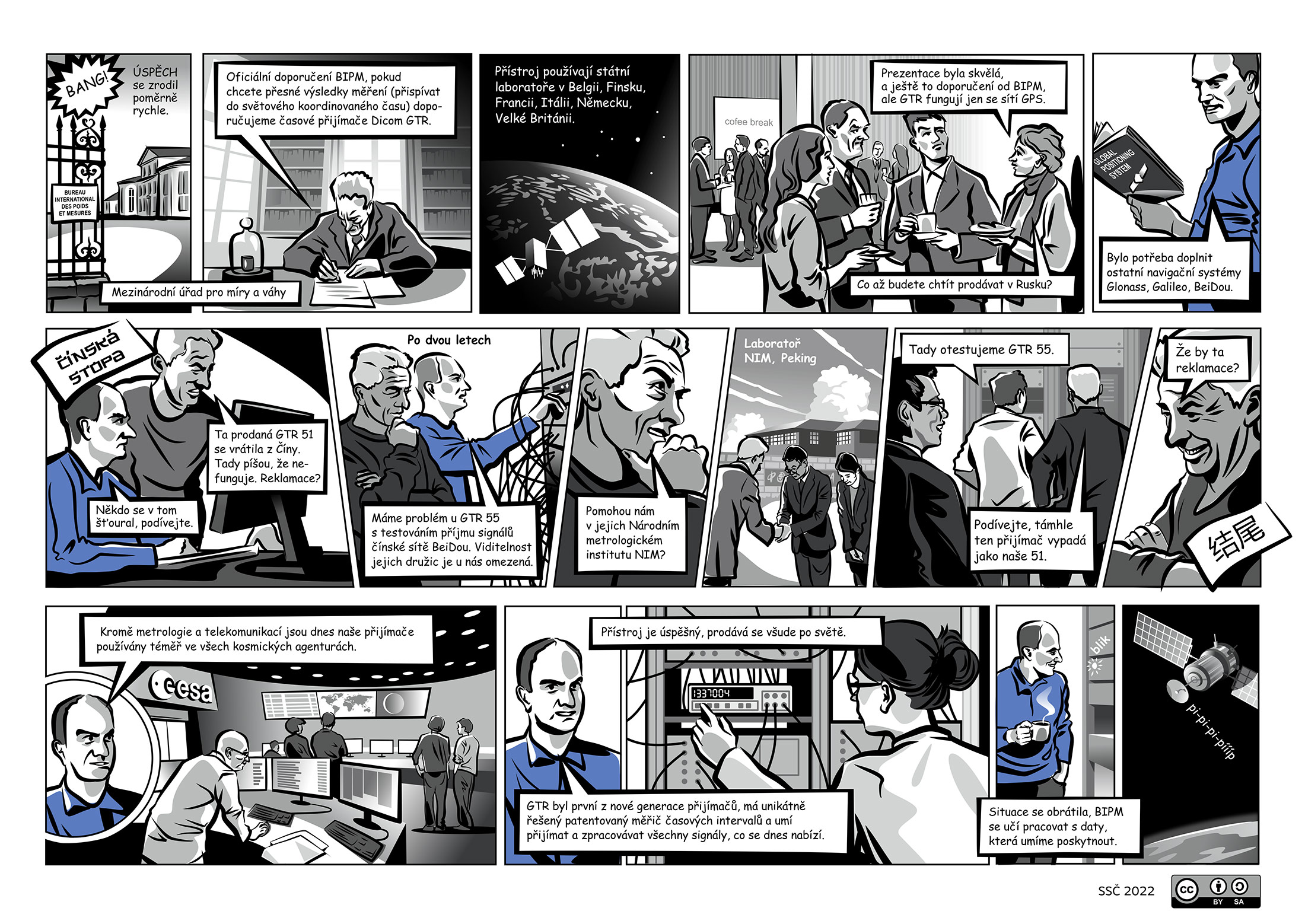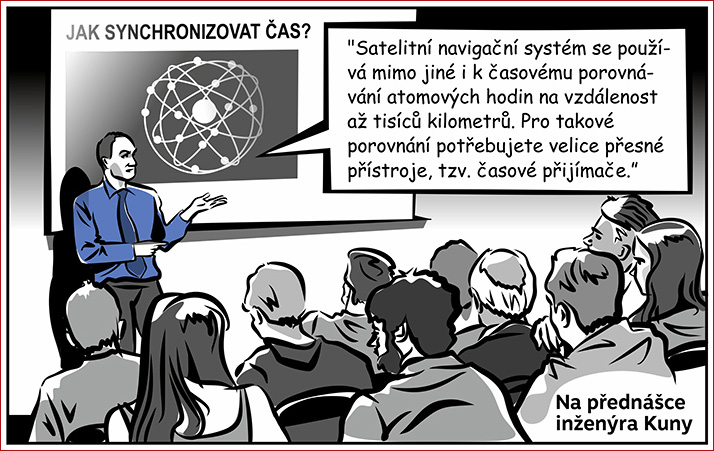In Czech only.
The State Time and Frequency Standard (SEČF) not only generates accurate time, but also participates in the calculation of Coordinated Universal Time (UTC). The laboratory provides metrological services at the highest level. These include the distribution of accurate time on the Internet, the calibration of secondary time and frequency standards, and expert and consulting activities in the field of time and frequency.
Scientists from the laboratory are also involved in comparing time scales over long distances using satellite navigation system signals. In cooperation with Czech industrial companies, they have developed a device for comparing time scales using satellite navigation systems. And this is where our story begins.


Alexander Kuna, Ph.D., head of the scientific team, answers questions from the Technology Transfer Center (CETTAV):
Our comic begins with a report from Science magazine entitled “Neutrinos are not faster than light.” How would you comment on that?
Yes, the report stated that the neutrinos arrived several tens of nanoseconds earlier. This immediately suggested to us that there was a problem with time synchronization. Measuring time with nanosecond precision over a distance of more than 700 km is really a tough nut to crack. Gradually, more details emerged, and among other things, we received a report that the German metrology institute PTB had performed a partial recalibration using the GTR50 travel receiver. We were involved in the development of this device.
The collaboration between scientists and the technology company DICOM seems completely conflict-free from your description. What was the reason for the smooth process?
The collaboration was indeed conflict-free, mainly thanks to the long-standing personal relationships between the researchers. Not only professionalism and expertise, but also personal ties contributed to the success.
What are the pitfalls of transferring results in the field in which you work? Is the case of time transfer receivers unique or can it be generalized?
In this field, the main pitfalls are a very small market, a narrow group of users, and therefore small production runs for manufacturers. The GTR50 receiver became successful because it filled a gap in the market, which was initially divided between two companies – Dicom and the Polish company Piktime – whose products were and still are significantly more expensive.
Are you collaborating on further development and improvement of time transfer receivers, or are you already working on something else?
We continue to cooperate with Dicom and MESIT. Further development and innovation is slowly underway, such as the implementation of new satellite navigation systems.
Author: Jiří Kavan
Zdroj: CETTAV, the Centre of Administration and Operations of the Czech Academy of Sciences

